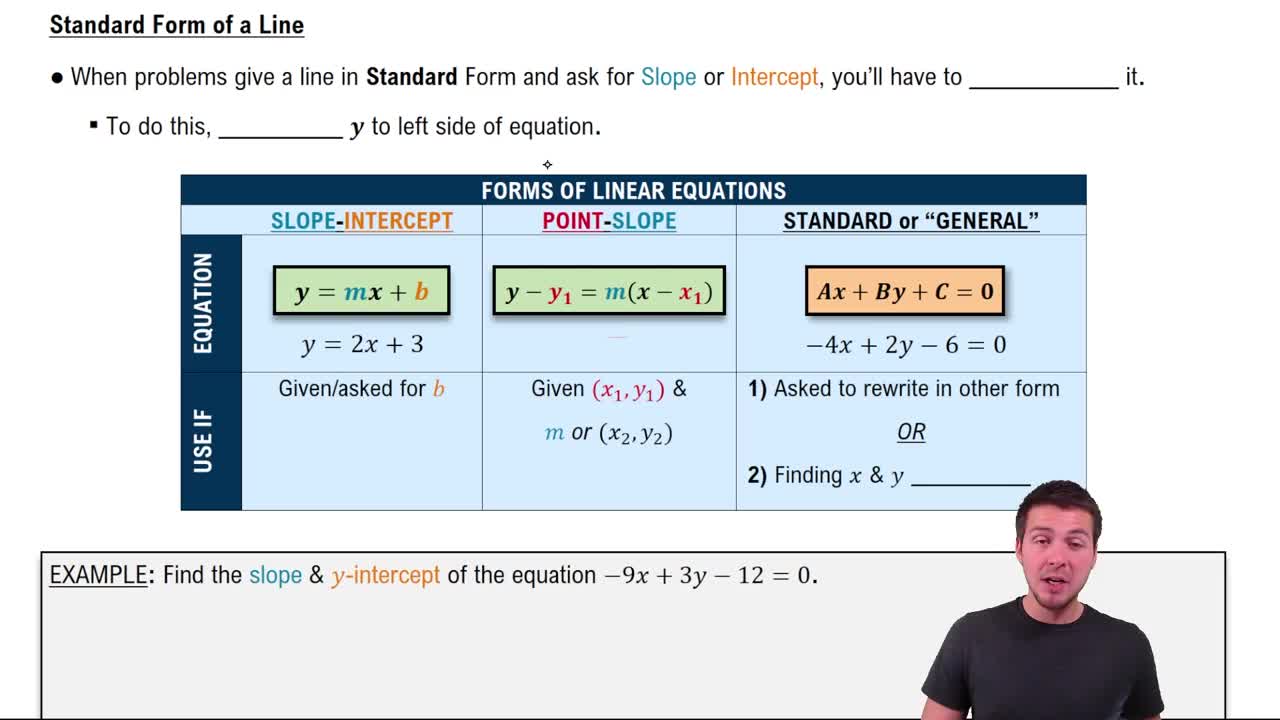Here are the essential concepts you must grasp in order to answer the question correctly.
Standard Form of a Linear Equation
The standard form of a linear equation is expressed as Ax + By = C, where A, B, and C are integers, and A should be non-negative. This form is useful for easily identifying the x- and y-intercepts of the line. To convert an equation into standard form, you may need to rearrange terms and eliminate fractions.
Recommended video:
Standard Form of Line Equations
Slope-Intercept Form
The slope-intercept form of a linear equation is given by y = mx + b, where m represents the slope of the line and b is the y-intercept. This form is particularly useful for quickly graphing the line, as it directly provides the slope and where the line crosses the y-axis. Understanding how to convert between forms is essential for solving problems involving lines.
Recommended video:
Perpendicular Lines
Two lines are perpendicular if the product of their slopes is -1. This means that if one line has a slope of m, the slope of the line perpendicular to it will be -1/m. In this problem, you first need to determine the slope of the given line and then use this relationship to find the slope of the line that is perpendicular to it.
Recommended video:
Parallel & Perpendicular Lines
 Verified step by step guidance
Verified step by step guidance Verified video answer for a similar problem:
Verified video answer for a similar problem:

